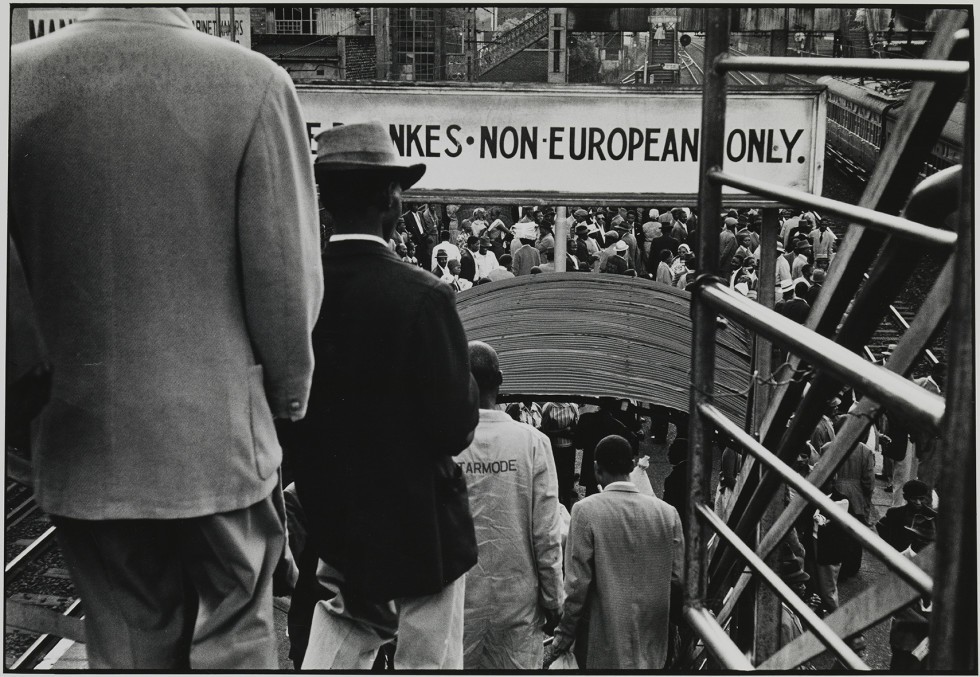In The Collection: Ernest Cole
17 Mar 2015 - 13 Mar 2016
IN THE COLLECTION: ERNEST COLE
House of Bondage
17 March 2015 - 13 March 2016
Curator : Anna Tellgren
Ernest Cole (1940–1990) grew up in a neighbourhood on the outskirts of Pretoria. He began photographing in his teens and worked as an assistant to a photographer at the picture magazine Drum in Johannesburg. His classification as coloured, rather than black, was a crucial distinction in the apartheid system of South Africa at the time. It meant that he had more freedom to go where he wanted and take freelance assignments as a photographer for various magazines and newspapers.
In the early 1960s, he engaged systematically in documenting the life of the black population under the shadow of racist segregation. He was inspired by the French photographer Henri Cartier-Bresson and his book about people in Moscow. This project eventually resulted in the book House of Bondage, published in 1967, portraying, among other things, the harsh existence of miners, the recurring passport controls, the long and tiresome commutes, the black servants in white households, and street children – the Heirs of Poverty, as Cole called them.
Ernest Cole left South Africa in 1966 in order to publish his book. It was immediately banned in his home country, forcing him to live in exile for the rest of his life. He settled in Europe for a few years, and was a member of the Magnum photographic agency for some time, but eventually ended up in New York, where he lived until his death. Around 1970, he visited Sweden and exhibited his photographs in Stockholm and Gothenburg. Ernest Cole’s photographs were donated to the Hasselblad Foundation in Gothenburg and Moderna Museet in Stockholm through his colleagues in the Tio fotografer group.
House of Bondage
17 March 2015 - 13 March 2016
Curator : Anna Tellgren
Ernest Cole (1940–1990) grew up in a neighbourhood on the outskirts of Pretoria. He began photographing in his teens and worked as an assistant to a photographer at the picture magazine Drum in Johannesburg. His classification as coloured, rather than black, was a crucial distinction in the apartheid system of South Africa at the time. It meant that he had more freedom to go where he wanted and take freelance assignments as a photographer for various magazines and newspapers.
In the early 1960s, he engaged systematically in documenting the life of the black population under the shadow of racist segregation. He was inspired by the French photographer Henri Cartier-Bresson and his book about people in Moscow. This project eventually resulted in the book House of Bondage, published in 1967, portraying, among other things, the harsh existence of miners, the recurring passport controls, the long and tiresome commutes, the black servants in white households, and street children – the Heirs of Poverty, as Cole called them.
Ernest Cole left South Africa in 1966 in order to publish his book. It was immediately banned in his home country, forcing him to live in exile for the rest of his life. He settled in Europe for a few years, and was a member of the Magnum photographic agency for some time, but eventually ended up in New York, where he lived until his death. Around 1970, he visited Sweden and exhibited his photographs in Stockholm and Gothenburg. Ernest Cole’s photographs were donated to the Hasselblad Foundation in Gothenburg and Moderna Museet in Stockholm through his colleagues in the Tio fotografer group.

